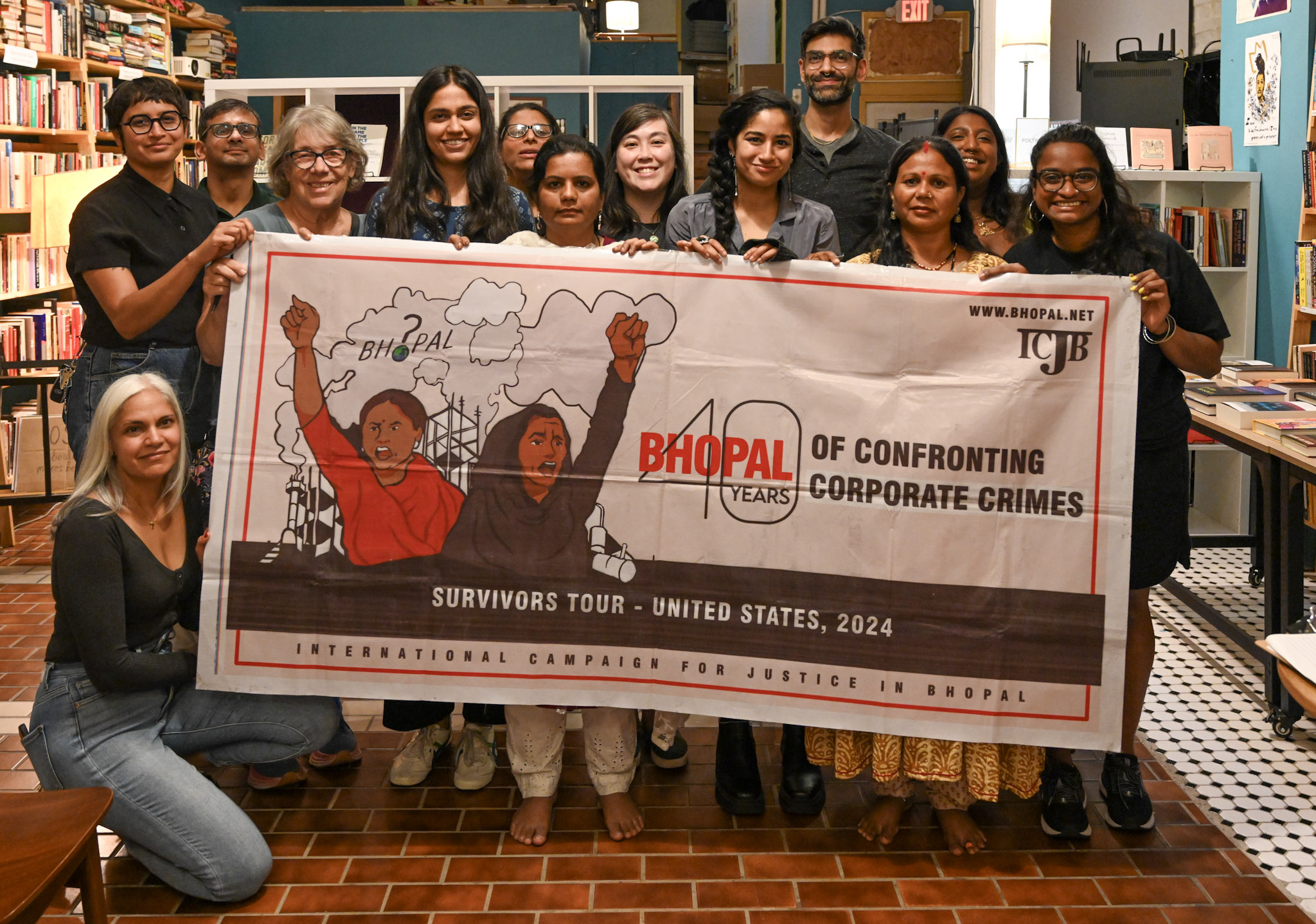Of Bhopal’s one million residents, 8,000 died in the first three days. Over 22,000 people eventually died from their exposure to MIC that night, and over half a million were maimed for life.
Illnesses, birth defects and deaths attributable to MIC exposure in the December 1984 disaster still occur, some of them to descendants of those exposed. Over 150,000 people in Bhopal live with chronic illnesses related to direct exposure or inherited from their parents’ exposure.
In addition to being responsible for the 1984 gas release, Union Carbide unsafely disposed of poisonous wastes within the factory compound starting in 1969. The company pumped hazardous waste into designated ponds starting in 1977. In 1996, it dumped toxic sludge from the ponds outside the factory. Over 100,000 residents of 48 communities within five kilometers of the factory were drinking dangerously contaminated groundwater without knowing it.
During the 40 years following this worst industrial accident in history, none of the eight executives of UCC’s Indian subsidiary in 1984 have spent a minute in jail.
After the Bhopal disaster, UCC sold the local company to Dow Chemical, which maintains that it has no responsibility for the cleanup. As a result, 93% of survivors of the 1984 disaster have received no more than $500 as compensation for personal injuries. Families of those who died received $2,000 for each death — and that only after years of struggle.



WTYP episode(s) about Bhopal:
Part 1: https://youtu.be/vCKVreNqMjI
Part 2: https://youtu.be/o1HT8Gaykjo
I found YouTube links in your comment. Here are links to the same videos on alternative frontends that protect your privacy:
Link 1:
Link 2: